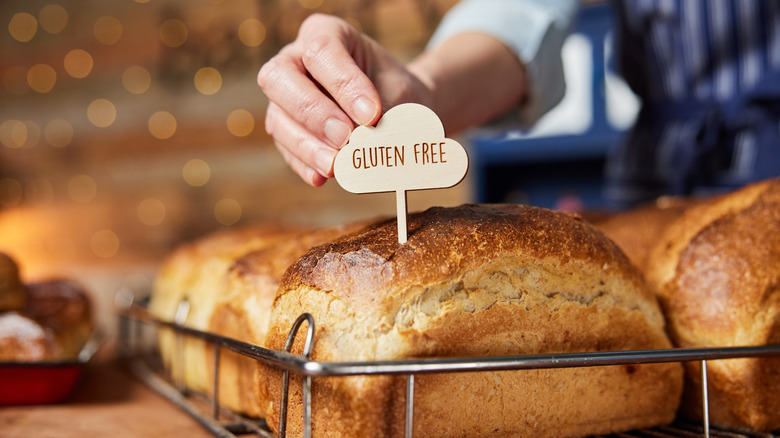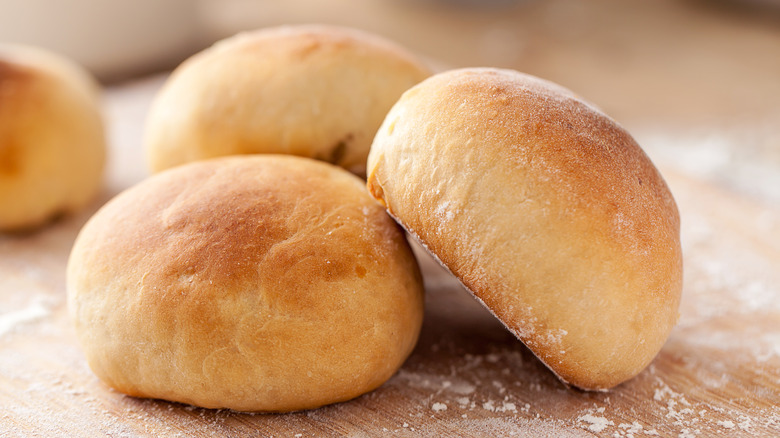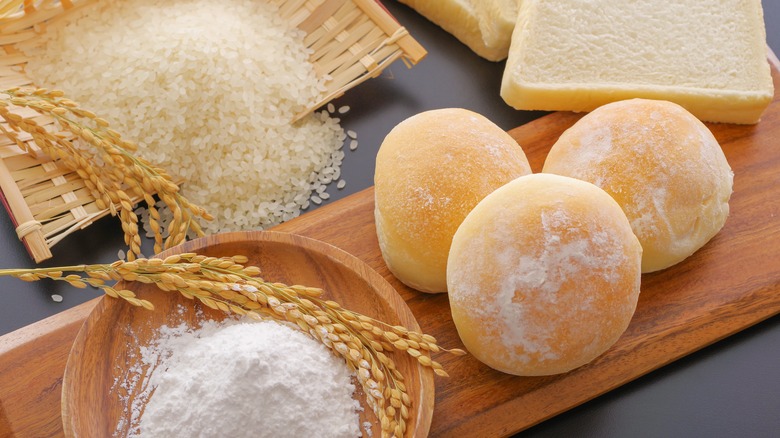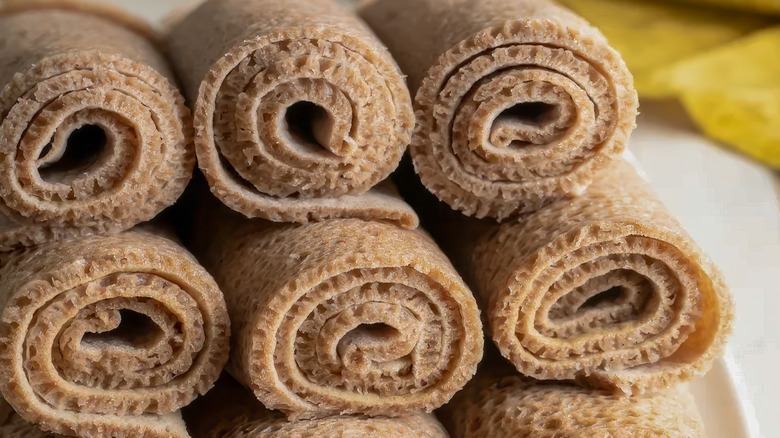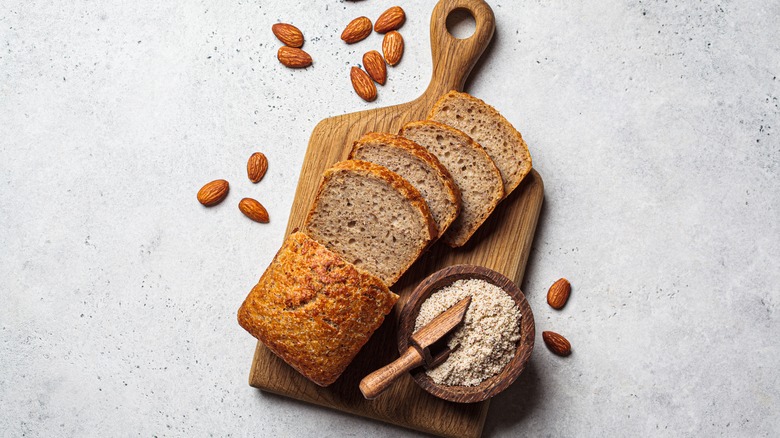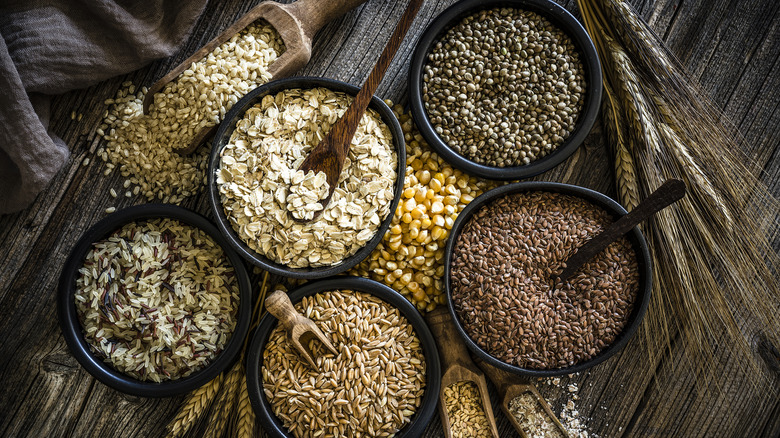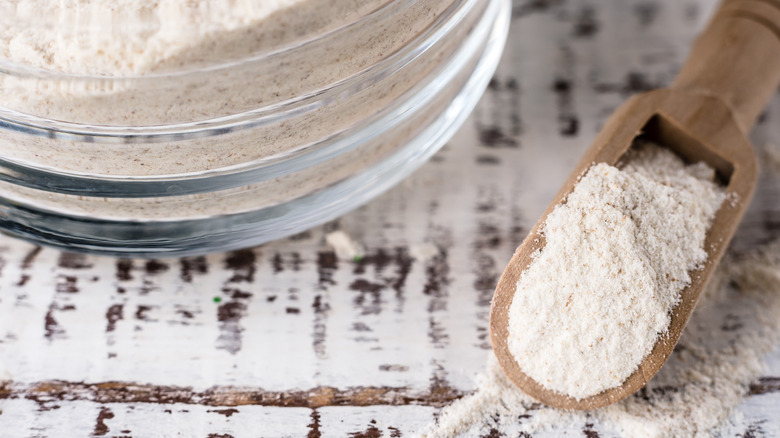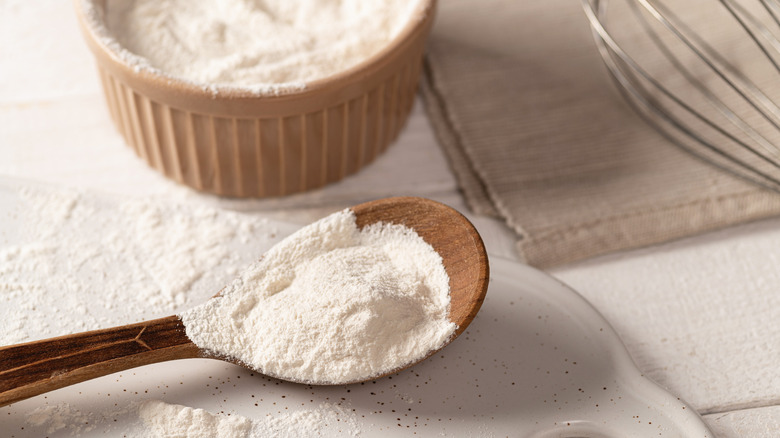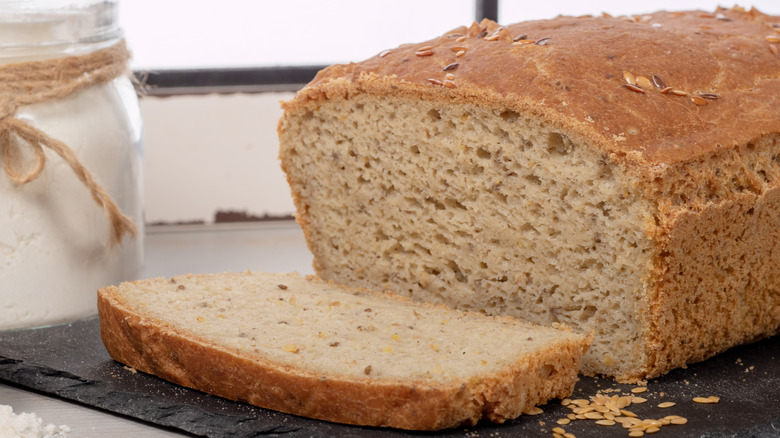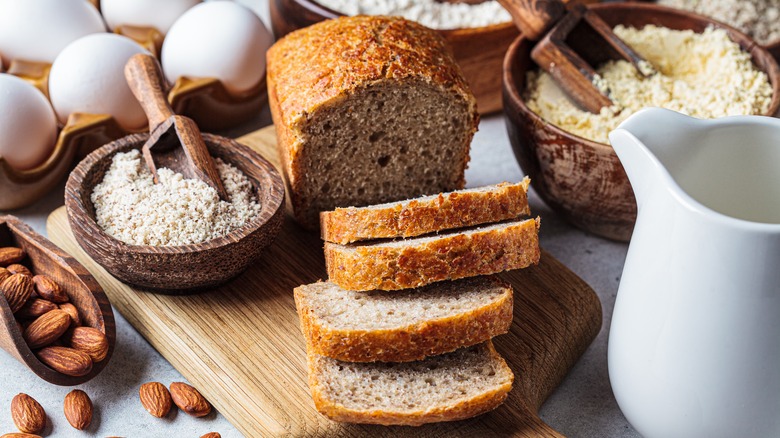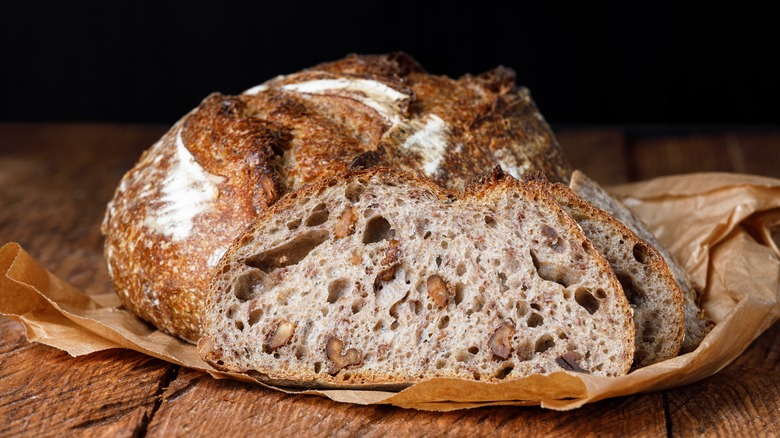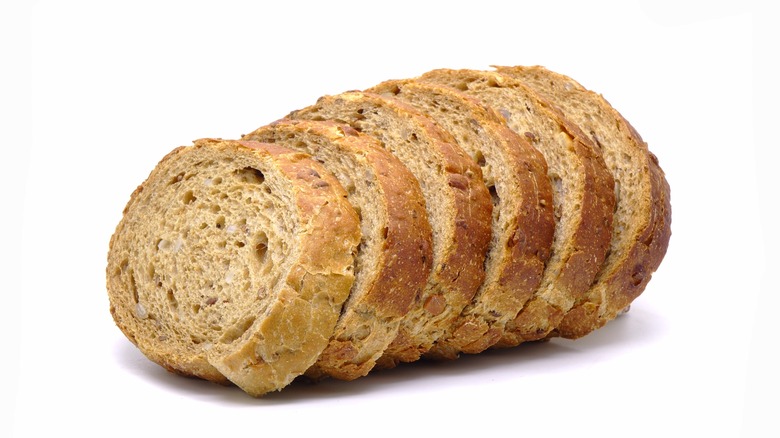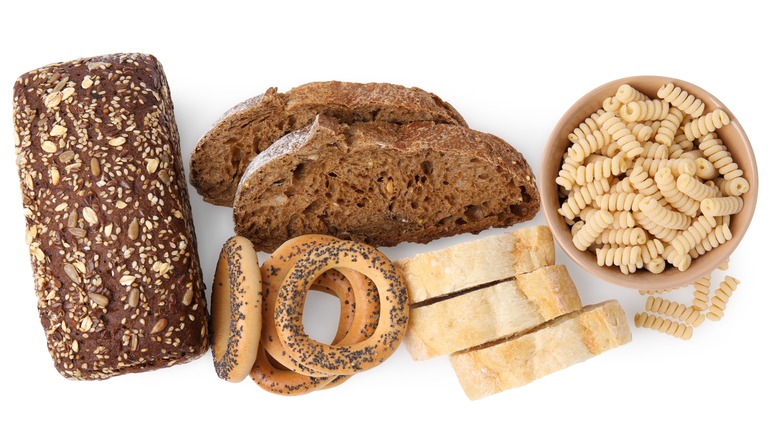What You Didn't Know About Gluten-Free Bread
In the last two decades, gluten has been unfairly labeled as the bad guy, accused as problematic, and associated with food that was deemed unhealthy. This wrongful narrative was nothing more than a trend. Gluten is a natural protein that gives pasta, bread, and cakes their distinctive structure. The firm gluten strands form from wheat and many other grains, and are the main reason why pasta has a nice chew and bread gets to trap air to develop a uniform crumb. At its core, gluten is not something we should avoid, as most people can consume it without any problems. However, some people can't digest gluten. Some are intolerant or sensitive, but for people with celiac disease, an autoimmune disorder, it can have damaging effects on the digestive system. Gluten-free products, including bread, were devised to cater to those who cannot process gluten.
The demand for gluten-free products increased due to a larger number of people with gluten-related problems, but it was also fueled by the trend claiming that the gluten-free label is the overall healthier option. As the label gained traction, new gluten-free products started popping up in supermarkets. Among many available products, gluten-free bread has always remained the cornerstone of the gluten-free diet. It took some time to perfect it, but the varieties are now widely available. If you ever wanted to learn more about this essential gluten-free product, we've assembled some less familiar facts about gluten-free bread that might help you better understand this special-diet staple.
Gluten-free does not mean healthier or more nutritious
Monikers such as sugar-free, low-fat, and gluten-free often make us believe these are healthier alternatives to your favorite products. While it could be true for some of these labels, gluten-free does not mean that it is a healthier and more nutritious option for everyone. This belief was strongly influenced by modern trends that often diss gluten and promote a gluten-free diet as something that benefits everyone. It relates to a similar narrative suggesting cutting carbs to reduce calories and lose weight. As gluten-loaded products are typically packed with carbs — think of bread and pasta — people may wrongly assume that avoiding gluten will help them become healthier, lose weight, and prevent diseases.
In reality, gluten-free products, including gluten-free bread, are highly processed, full of additives, and may even include some common allergens. A closer look at the nutritional profile of gluten-free bread reveals that it's not significantly different from typical white bread in the amount of carbs. Also, you'll find that gluten-free bread generally has more sugar and less protein than classic white bread. Though it depends on the producer, the two have approximately the same number of calories.
Essentially, gluten-free means that it is a healthy alternative for those with celiac disease and anyone sensitive, allergic, or intolerant to gluten. For everyone else, a fresh loaf of bread that uses traditional methods and only relies on flour, water, yeast, and salt is perfectly adequate in the nutrition department.
Gluten-free and wheat-free are not the same thing
For those living with celiac disease or any type of gluten sensitivity, it's sometimes challenging to find bread and other products that fit their dietary needs. Most products, including bread, will have a visible gluten-free label, but it's always best to look at the ingredient list to ensure that there is no presence of gluten. The gluten-free label is standardized and approved by the FDA, and the regulations stipulate that only those products with less than 20 parts per million of gluten can use it. However, it depends on the producer whether they want to use it, so you'll sometimes find gluten-free products that don't choose to be labeled as such.
The biggest misconception with the labeling system occurs with the wheat-free label. As gluten is often connected to wheat, people sometimes don't differentiate the grain from the protein and believe that wheat-free and gluten-free labels mean the same thing. While gluten-free implies that the product is suitable for all those who have problems with gluten, wheat-free only indicates that there is no wheat grain inside the product. The wheat-free label does not guarantee that the product is gluten-free as it can contain other ingredients or grains such as rye or barley that, like wheat, are a great source of gluten. While gluten-free products are usually safe for those intolerant or allergic to wheat, the approach does not work the other way around.
Gluten-free bread is an ancient product with many regional varieties
Gluten-free bread is not a recent trend. Though it's impossible to pinpoint when and where the first gluten-free bread appeared, it's assumed that it's one of the first bread varieties that's been around ever since humans started producing food. Though wheat was always predominant and the preferred grain for bread production, gluten-free versions appeared in areas where wheat was not traditional or suitable for cultivation. The goal was to make food with what was on hand and keep people fed. This resulted in many bread varieties around the world that were made with gluten-free grains or starches, such as potatoes or cassava.
As these breads miss on that airy gluten structure, most of them were made into flatbread form that could be cooked quickly and used to scoop food. Some of the most famous examples come from the Americas, where naturally gluten-free corn was a native crop used to make legendary tortillas and traditional arepas and pupusas. In India, they relied on rice and lentils to create dosas, thin and flat pancake-like bread that is still an important part of the Indian diet. Ethiopian injera is another traditional version, while various versions of quick pan-fried bread made with corn or chickpeas were made in different parts of the world.
Tasty, mass-produced gluten-free bread has only recently become widely available
Though people have been familiar with gluten-free breads for a long time, the airy and soft version that best resembles classic wheat bread became standard at the end of the 20th century. Though the connection between gluten and celiac disease was already known in the mid-20th century, the development of gluten-free bread was not so advanced. Various products, such as cookies and crackers, proved easy to recreate in the gluten-free version, but bread was the most demanding mission.
The first versions of gluten-free bread were hard and brittle and called for heating and toasting to make a palatable treat. It took decades of trials and testing before producers could produce light, airy, soft, and at least something that partially fit the idea of a traditional bread. When the right ingredients and the ratios were on point, the mass production of gluten-free bread started. These days, gluten-free bread is not a rarity. Besides the factory-produced version available in supermarkets, some bakeries specializing in making gluten-free bakes usually include several fresh varieties in the portfolio, including a soft and elastic version that could be a great replacement for traditional gluten-laden bread.
A variety of grains can be used to make gluten-free bread
Though most grains are a great source of gluten, some don't fall into the category and are entirely gluten-free. These grains will not have the airy texture of wheat bread, an open crumb, or the best rise, but they can be a fantastic option for all those whose gut can't tolerate gluten.
One of the best options is sorghum, whose seeds are edible and can be ground and used for bread making. Sorghum can make lighter and softer bread, but it is also nutritionally valuable and rich in fiber and protein. Quinoa is another amazing option that is now widely available and often praised for its good nutritional qualities. Besides corn, oats are probably the most familiar gluten-free cereal grain for most bakes and work well in bread. Buckwheat is another excellent solution for dense, flavor-packed bread, but less familiar options such as teff and amaranth should be added to the list.
Besides their nutritional qualities, these grains deliver unique textures and impart a range of flavors, so they can also be a suitable addition to classic bread. Most of them make denser and heavier loaves and usually call for starches, binders, or extra leavening agents to build softer bakes. Of course, all these options work well independently, but they also blend well to create bread with various flavors, so don't be afraid to experiment.
There are many grain-free flour varieties suitable for bread making
Besides grains, there are many other ingredients and creative ways to make gluten-free bread. One of the traditional options is to use cassava, a starchy root native to South and Latin America that is also used to make tapioca. Cassava flour performs well in bread recipes and is especially suitable for making gluten- and grain-free bread. Chickpea flour is a great option if you want to have well-structured bread with a dense crumb. Unlike cassava, which has a neutral flavor profile, chickpea delivers a lot of earthy and nutty flavors. Potato is another fantastic alternative for gluten-free bakes. The bread can be made with potato flour, but the easiest way is to use mashed potatoes and enrich the mix with some dry ingredients.
The easiest option for homemade gluten-free bread is to buy pre-packed flour mixes that you typically need to mix with water or a couple of staple ingredients. These mixes are now widely available in stores and include a wide range of varieties, so you can pick the version that best fits your diet or go with a flavor combination you prefer. These mixes are often more expensive than regular bread mixes but still offer a great alternative for all those who need to follow a gluten-free diet.
Gluten-free bread relies on different binders that mimic gluten structure
Besides different gluten-free flour varieties and starches, most gluten-free breads must use binders to recreate the gluten structure and create elastic, soft, pliable bread.
As gluten helps to make all those tiny air pockets inside the bread, removing it from the recipe means you end up with a dense, crumbly, and chewy product. These recipes need ingredients that will try to mimic the same gluten process, and the most reliable option is to add xanthan gum and psyllium husks. Xanthan gum is the most common food additive you will find in store-bought gluten-free bread and is something that is added to pre-packed gluten-free bread mixes. It is produced by fermenting sugar into a gooey mass, which is then dried and made into a fine powder that is used as an additive. When it comes in contact with liquid, xanthan will create a thick, glue-like mass that will help bread stay soft and springy. You will also commonly see xanthan gum in many other foods, such as sauces and ice cream, as it helps to create a thick, creamy consistency. It is also great for homemade gluten-free cookies.
Another common addition to these mixes, and the one you can easily grab for home use, is psyllium husk. These husks come from psyllium seeds of the Plantago plant. When mixed with water, they create a similar gel-like texture that helps gluten-free bread stay together and trap the air from leavening agents.
Most gluten-free bread is dense, pale, and does not rise much
Despite the advancement in technology and the use of new ingredients that try to recreate the elastic gluten structure, gluten-free bread never looks and tastes quite like regular bread. Though it varies among producers, most gluten-free bread can't achieve the typical crispy crust, golden brown color, or get that significant rise.
This is mainly due to the ingredients. The bread stays small, firm, and compact as there is no gluten, and yeast and leavening agents can only provide a limited amount of air. As binding agents are not as strong as gluten, the pockets of air are usually smaller than in traditional wheat bread. Gluten-free bread mixes also require more liquid to get properly hydrated. As the dough is dense and packs more liquid than usual, it needs more time to rise and generally calls for longer baking time. Browning mainly depends on the exact ingredients in the recipes, but most gluten-free bread can't achieve that caramelized brown color or brittle crust.
Because gluten-free bread requires a totally different approach, if you're trying to recreate this bread at home, it's crucial that you follow a specific recipe designed for gluten-free bread. Simply swapping the ingredients and following the same process is not a recommended strategy.
Not all gluten-free bread is created equal
As gluten-free bread has become a coveted item in the last two decades, the market is now flooded with brands offering different gluten-free options. Like all other foods, the quality of commercial gluten-free bread can significantly vary across brands.
The quality will mainly depend on the ingredients, so make sure to check the list to see what exactly goes into the bread. This will also give you an idea of how the bread tastes. The general rule of thumb is that multi-grain varieties are probably better, both nutritionally and taste-wise. Many of these varieties are too dense, so do the squeeze test to check for elasticity. Some brands will also use too many starch-laden elements, which usually lack flavor and may provide an overly starchy mouthfeel. You should not be scared off by the long list of ingredients you'll find at the back of most gluten-free products. The fact is that gluten-free bread requires more effort and elements to recreate something that resembles classic bread.
Of course, the best way to get high-quality gluten-free bread is to make it at home. This allows you to choose the best ingredients and the flavors you prefer, and it also ensures that you get the freshest possible version.
Sourdough can be a good alternative for those sensitive to gluten
Sadly, for those allergic and intolerant to gluten and people with celiac disease, gluten-free bread is currently the only option that will not trigger negative reactions. However, those with mild gluten insensitivity could find an alternative in sourdough bread. This is also a possible option for those who want to avoid or reduce gluten intake as much as possible.
Sourdough bread can be made with various types of flour, such as rye and barley, but wheat is generally the most common option. If the sourdough bread is made with these flour varieties, it means that gluten is present. However, the specific type of yeast and bacteria found in sourdough and the long fermentation work better at breaking down gluten, so the bread could potentially have less gluten than standard wheat bread made with baker's yeast. Research published by Clinical Gastroenterology and Hepatology proved that sourdough bread with 8 parts per million residual gluten did not cause any reactions in patients with celiac disease.
This topic calls for more research, and sourdough, despite all its benefits, still poses a risk for anyone with serious gluten intolerance or celiac disease. But it could potentially work for those with milder problems and light intolerance.
Gluten-free bread has a shorter shelf life than regular bread
Besides the ingredients, flavor, appearance, and texture, gluten-free bread also has a relatively short shelf life compared to classic wheat bread. In the best-case scenario, fresh gluten-free bread usually lasts up to a week if refrigerated. This shelf life might not be problematic if you apply it to the typical wheat bread, but gluten-free bread is a product with a low turnaround, so there is a higher risk of it going bad. Also, it is usually more expensive, so it's oftentimes economically challenging to buy and eat it fresh. Some brands rely on vacuum-sealed packages, which help the bread stay fresh for months, but after it's opened, this bread needs to be refrigerated as it will immediately start to deteriorate.
Freezing proves to be the go-to way to store gluten-free bread and you can immediately freeze a fresh loaf. Ideally, you want to freeze sliced bread so you can pull out and defrost the amount you need. As freezing does not affect the flavor or the texture of gluten-free bread, a lot of loaves are sold already frozen. Once thawed, make sure you use the bread in a couple of days. Besides commercially produced bread, freezing is also a great option for homemade bread or the one you get at your local gluten-free bakery.
The demand for gluten-free products is continually rising
In recent years, the global market for gluten-free products has significantly increased. The reason for the growth is mostly due to the increased number of celiac disease diagnoses and general awareness about the gluten-free diet. These factors have influenced major food brands to investigate, see the potential, and invest in the market, as the demand is only expected to grow in the future. Besides bread and other baked products, the demand for all gluten-free products, such as baby food and salad dressings, will probably increase.
Besides the number of people requiring gluten-free products, the gluten-free trend benefits from the popular narrative that promotes a balanced diet and healthier lifestyle. Regionally, the biggest rise is expected in Europe, North America, and Asia Pacific, while Africa and South America might not see a significant change. According to numbers published by Zion Market Research, it is estimated that the value of the gluten-free market was around $7.07 billion in 2023, and by 2032, it will reach $16.49 billion.
